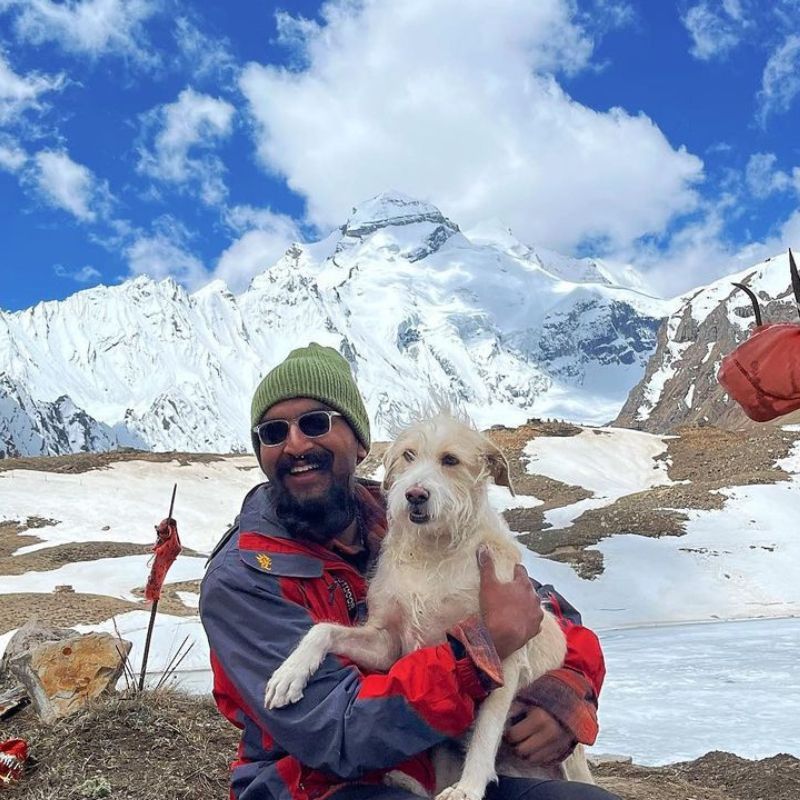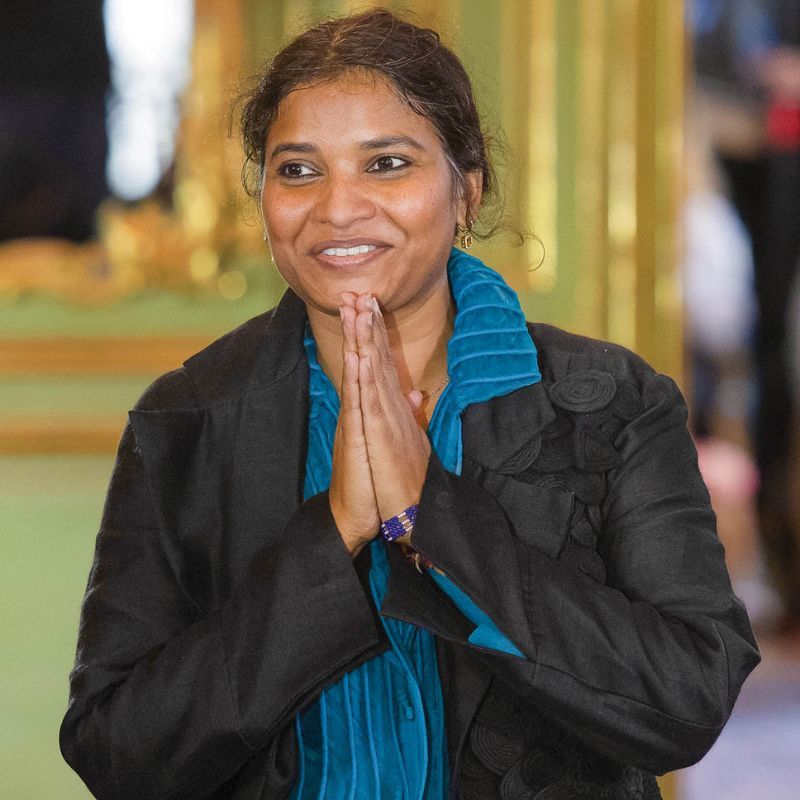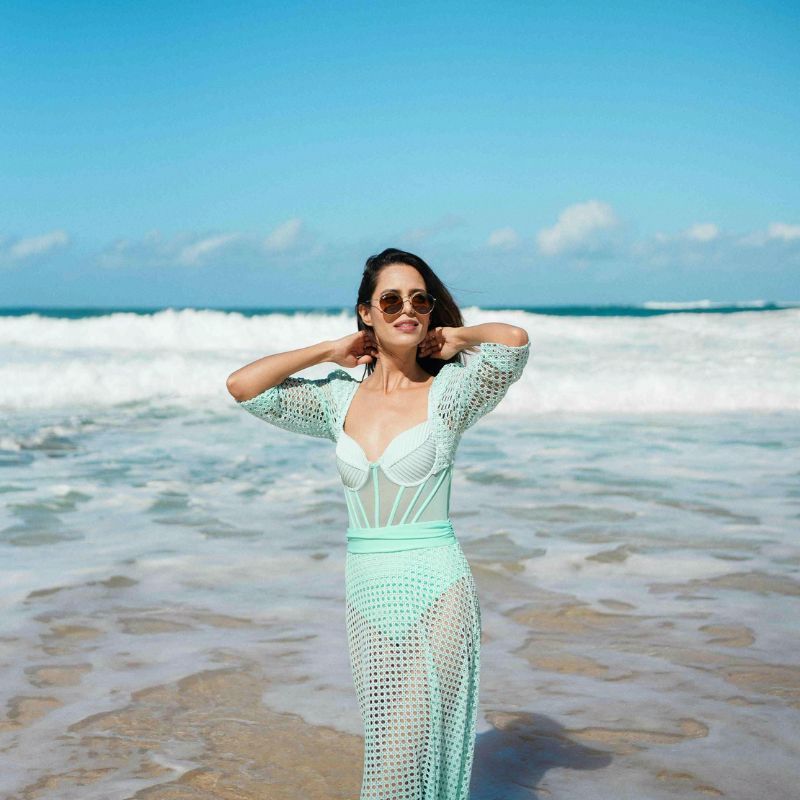
Thirty-one-year-old Noor Jahan is a research scholar, art conservator, and entrepreneur, besides being the dependable goaltender of the Indian ice hockey team. The multi-hyphenate chats with us about the various facets of being a trailblazer on and off the ice rink. By Bayar Jain
T+L India: You’re a research scholar, art conservator, co-founder of Empire Tours Ladakh, and an ice hockey player. What role, would you say, describes you best?
Noor Jahan: It’s a mix of different things. My hockey journey started at a very young age, when I used to play on a small pond in my village [in Ladakh]. The Indian women’s ice hockey team was founded in 2016. However, ice hockey is a seasonal sport and we depend on natural ice—which is available for just two-and-a-half months in a year. So, I could not earn from the sport and had to choose something else. That’s how art conservation came into the picture. I was always inclined towards art and learned about a course that teaches art conservation in India. Recently, I founded Shesrig Ladakh, my conservation practice. Since Ladakh is a tourist destination, my brother and I co-founded Empire Tours Ladakh. He runs it full-time, but I help out.
T+L India: How do you balance such a variety of jobs?

Noor Jahan: Ice hockey is seasonal, and luckily even art conservation is seasonal in Ladakh—organisations usually work in summer only. That was one of the reasons I co-founded Shesrig Ladakh. If you have a conservation studio, you can bring in portable objects and work with them during winter. With the tourism company, my brother has been very supportive and does most of the work.
T+L India: Do you remember the first time you held a hockey stick? What motivated you to take up the sport?
Noor Jahan: Very clearly! It was not even a proper ice hockey stick. I started skating around 2006. That’s when I saw a lot of people playing ice hockey. My grandfather was a carpenter. I remember asking him to make one [an ice hockey stick] for me because everyone had one—and he did! That was my first hockey stick. Around the same time, I met a few other girls who were part of a club called Ladakh Winter Sports Club. They were offering a 15-day coaching camp for aspiring hockey players. They had gotten a coach. I persuaded my family to let me attend the camp. That changed everything.
T+L India: Is there a particularly memorable match or tournament you played in?

Noor Jahan: In 2016 [in Chinese Taipei], we were exposed to the international rink. We had never played on an international-size rink before or with proper dasher boards. We saw a different world. Even the ice surface was different from what we saw in Ladakh—natural ice is a different world from artificial ice. We had our first game against Singapore, and we realised we were not ready to compete at such a level. But each day, we learned things that hadn’t been taught to us before.
T+L India: What challenges did you face as a female ice hockey goaltender in India?
Noor Jahan: Ice hockey is a really expensive sport. It’s not just about carrying a bag and going to play. Earlier, I was financially dependent on my parents, and even if they agreed to buy skates for me, there weren’t any available to buy! We [Indians] were dependent on foreign hand-me-down equipment. And the equipment would only go to specific clubs, mostly men’s. Until 2016, I’d always played with borrowed gear. Before any tournament, we would go around Ladakh looking for equipment. We would [usually] borrow it from the men’s team. People would come to the rink and make fun of us. They thought we weren’t good enough. But things have changed over the years.
T+L India: In India, ice hockey is still in its nascent stage. What are some things that can promote the sport?
Noor Jahan: Right now, the sport is limited to the Himalayan region. People from South or Central India, for example, don’t know about the sport, because they don’t have that kind of weather. But if a tropical country like Thailand can have artificial ice rinks, so can we! Each state needs to have one (ice rink). We need representation from each state.
T+L India: Apart from ice hockey, what are your favourite adventure sports?

Noor Jahan: I started skiing last year, and I really enjoyed it. I’m trying to get into it just for recreation. Recently, I was in Dras, in Ladakh, where it can get very icy. It has beautiful slopes! Although I was there for an ice hockey camp, I also tried skiing and snowboarding.
T+L India: Can you recommend some dishes that we must try in Ladakh?
Noor Jahan: Ladakh Organic Restaurant in Moti Market, in Leh town, serves the best organic food. A lot of people have thukpa, but there are actually a lot of varieties of it. For a healthy version, try pathug. Try chutagi, which is similar to pasta. A restaurant in Leh, De Khambir, serves fresh Ladakhi bread (khambir). They even make sandwiches out of these breads and they’re yum!
MUST VISIT IN LADAKH
Zanskar, Kargil, Dras, Suru Valley, Tso Moriri, and Hanu.
FAVOURITE ART DESTINATION IN INDIA
Rajasthan.
Related: We Get The Taste Of The Local Life In Ladakh Through Our Immersive Travel Experience










